…or: How knitting can challenge the norms of society.
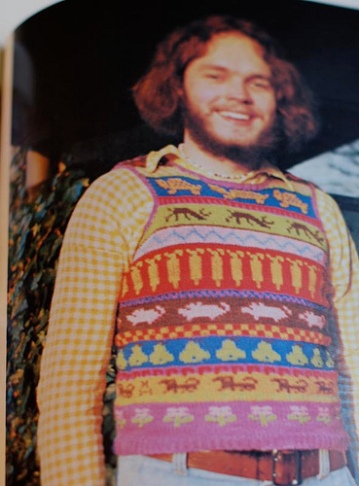
Lately I have found myself becoming increasingly fascinated by Hønsestrik, a Danish knitting style from the 70’s, which literally translates into “Chicken Knit”. Hønsestrik is done with bright colours on a double pointed needle, so no purling is needed. The technique seems to have found inspiration in fair isle patterns, but with the Hønsestrik patterns resembling every day objects, animals and people to a greater extent.
But besides the very bright colours and naive patterns (which I think look adorable on kids, maybe not so much on grown men with beards…) Hønsestrik is really all about making a political statement and challenging the norms of society at the time.
Hønsestrik developed as a protest against the capitalistic forces of yarn producers, who only allowed you to buy a pattern if you also bought yarn the pattern was designed for. But Hønsestrik is also challenging the idea behind the whole concept of following a pattern strictly from beginning to end, or the idea that everything (or everyone) can be fit into standard sized “boxes”. The main concept behind Hønsestrik is therefor to think “out of the box” and find ways of creating your own creative knitting design usually with the materials and shapes of your own choice.
Hønsestrik is also the title of a knitting book (3 knitting books to be correct) authored by Kirsten Hofstätter. The first book was published in 1973 after unsuccessfully attempting to have the book published by printing company Røde Hane (Red Rooster) Hofstätter decided to publish the book herself and created the publishing company Hønsetryk (Chickens Print). The name of her publishing company being a provocation against the male dominated company Røde Hane. The term Hønsestrik is also an ironic reference to women usually being referred to as Høns (meaning “chicks” – in Denmark this term has a negative perception).
The second book (Hønsestrik 2) was published in 1974 and the front cover shows a happy newly wed couple in Hønsestrik. However notice, that even though one of Hofstätter’s main messages was the equality between men and women, the bride is still placed behind the groom (she is the one in purple). A third book was published in 1975.
Today, many danish designers and knitters are still inspired by the concept. But perhaps more by the graphic layout and not so much the political message. Take for instance this sweater from the Danish knitting magazine Kreative Kvinder (Creative Women)
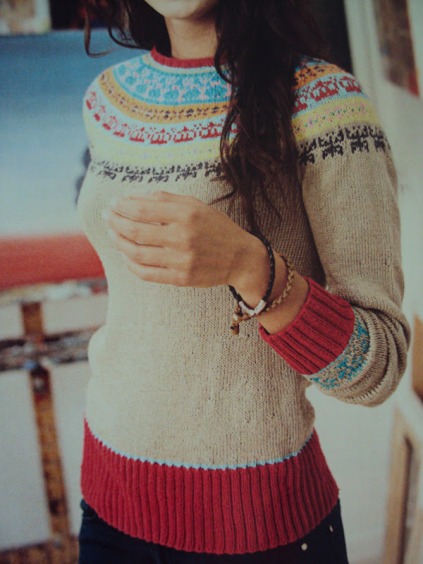
Or these designs from Danish clothing designer Henrik Vibskov
Hønsestrik is definately on my “To Do” knitting list.
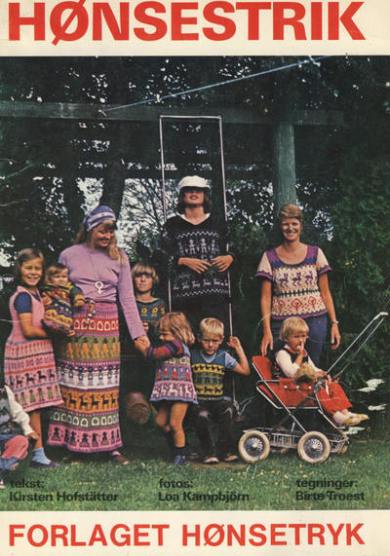
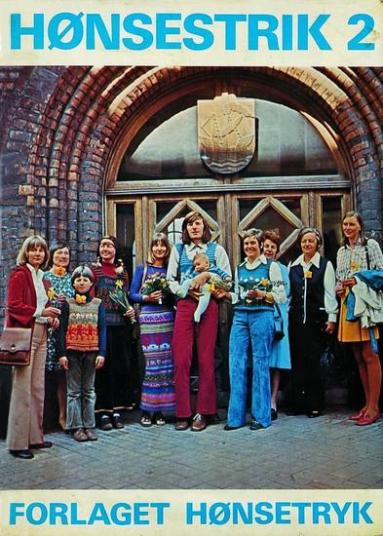
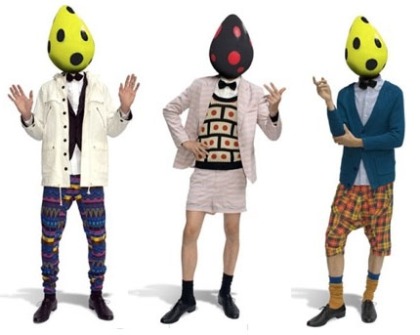
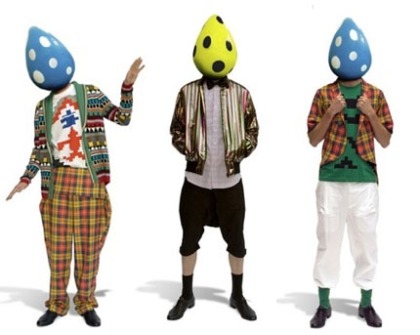
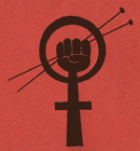
Wonderful information! My Danish friend just referenced Hønestrik and asked me if I was familiar with it. I googled it, and there was your excellent article! It is absolutely a radical practice. When you consider that it is only very recently that women have even been allowed legally to own things like knitting companies, you see that something like hønestrik is actually revolutionary. In the way that women do revolution, which is quietly, diligently, creatively. Are you Danish? How did you find these references? Thanks again for posting it!
Susan Ekstrom
Thank you so much for such an informative article! I’ve just discovered Hønsestrik and I am so happy to discover its awesome radical history! I think I might have to knit a skirt similar to the one the bride is wearing because she looks so fantastic in it!
I bought the English translation of the first book in the 1970s – re-titled “Everyone’s Knitting” and with a goofy photo of grandparents knitting with a child in a most un-hippy manner. It’s still a great little book, though. I first encountered Honsestrik with a group of Danish volunteers in Israel: I was there with my Danish husband from 1997 – 78. They taught me to cast-on Danish style, and to knit, and gave me a small circular needle. I neglected it for years then re-taught myself about 10 years ago and haven’t stopped since.
Hi Cee L
Thank you for the lovely story 🥰 happy to hear you’ve picked up knitting again.
KR Kirstine